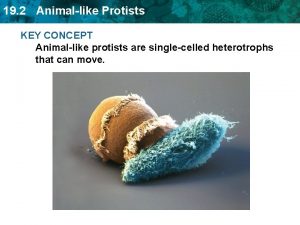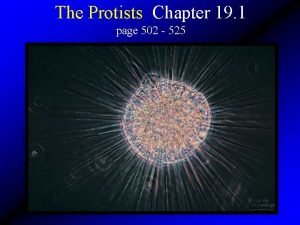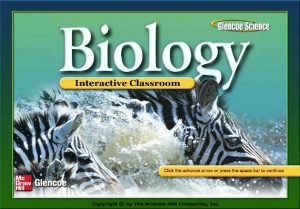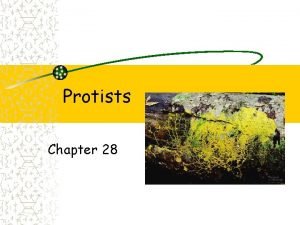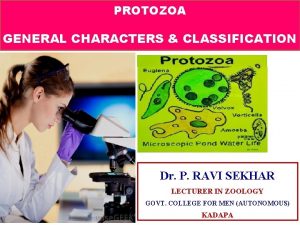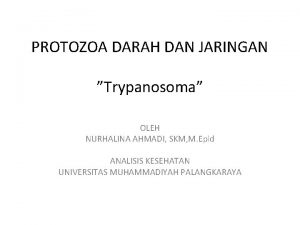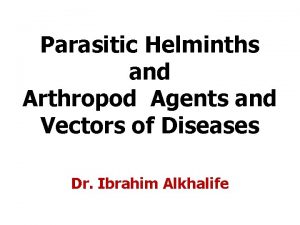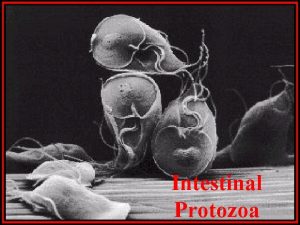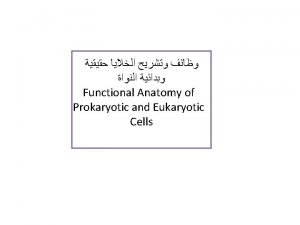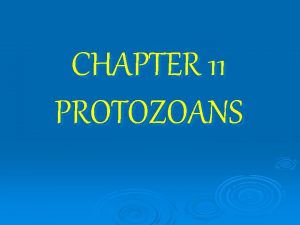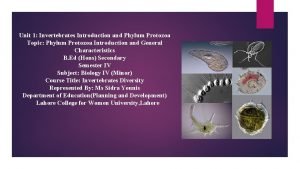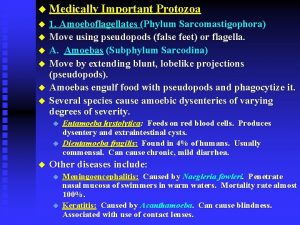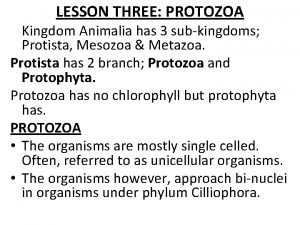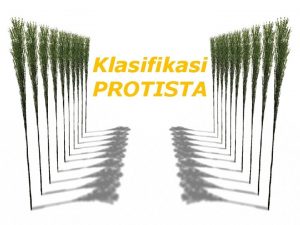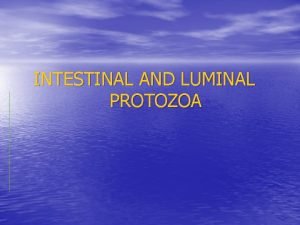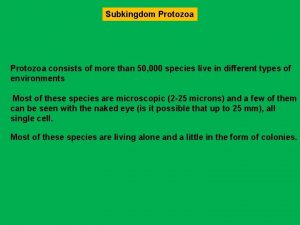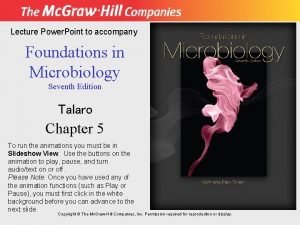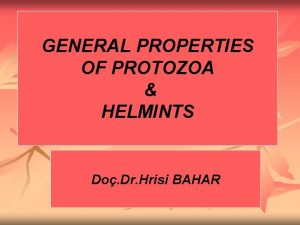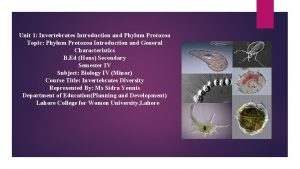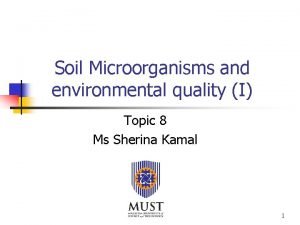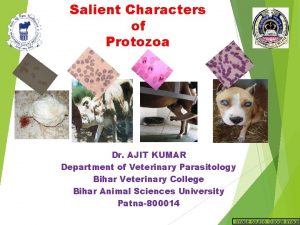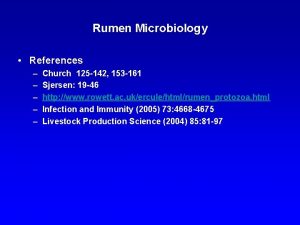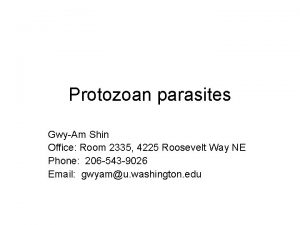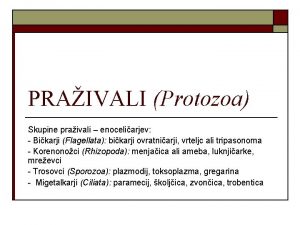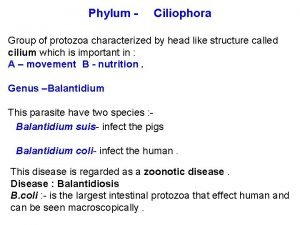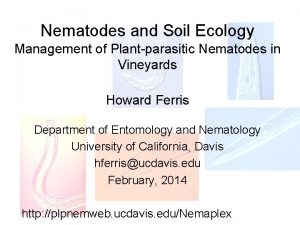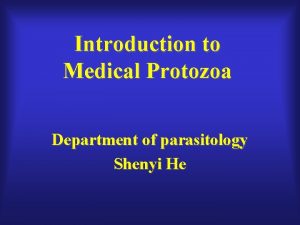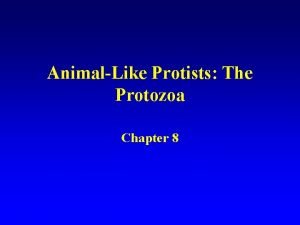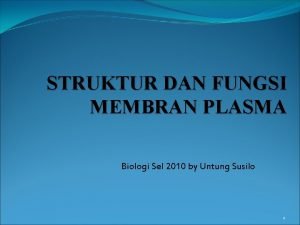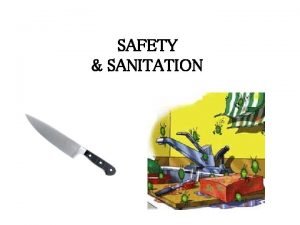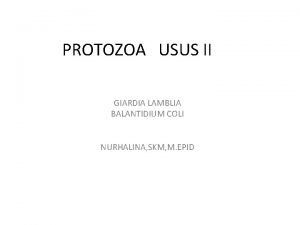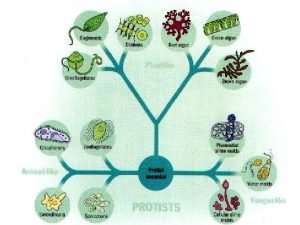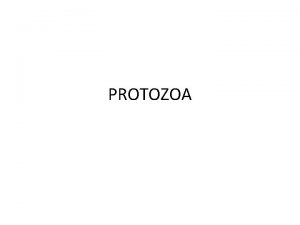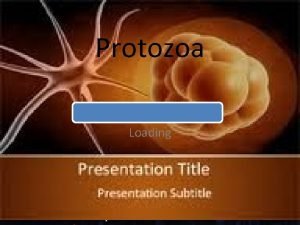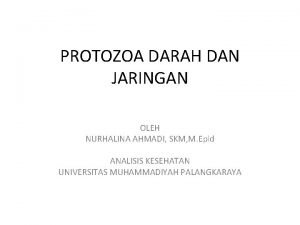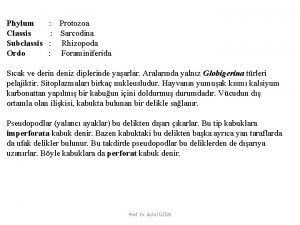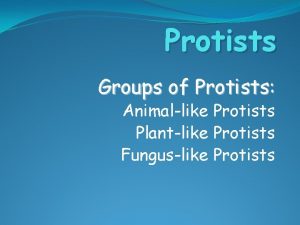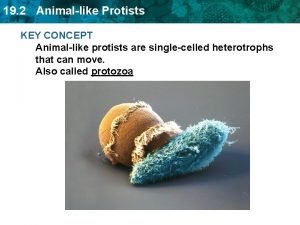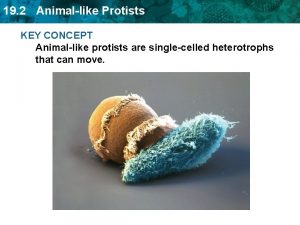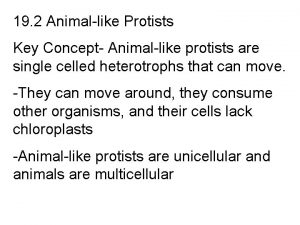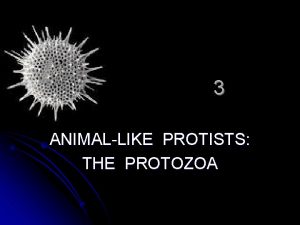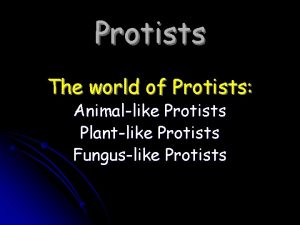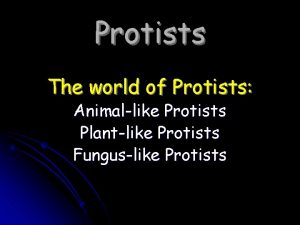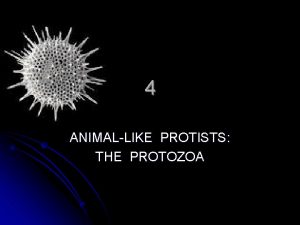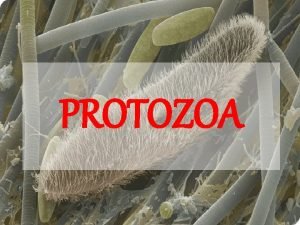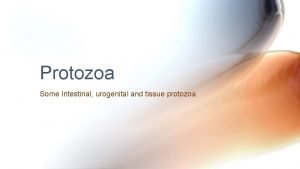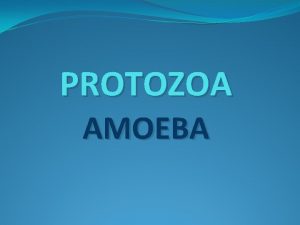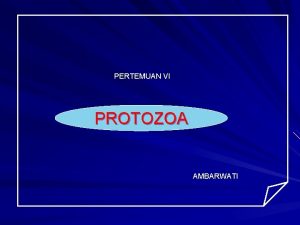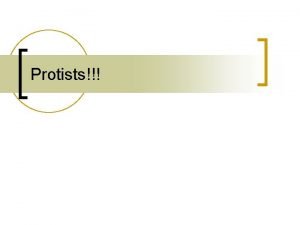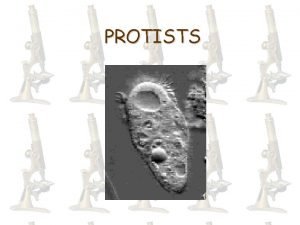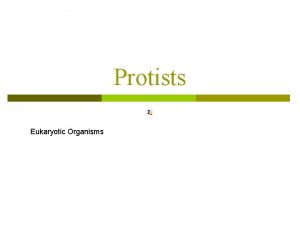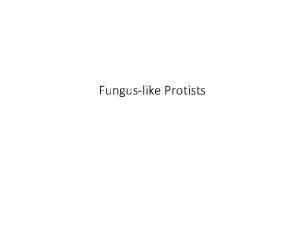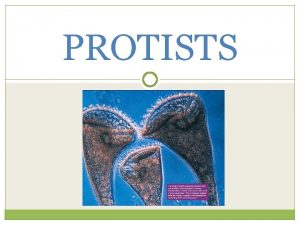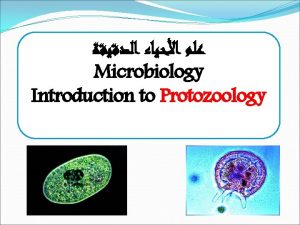AnimalLike Protists The Protozoa Chapter 8 ea ida













































- Slides: 45

Animal-Like Protists: The Protozoa Chapter 8

ea ida c sta chn cta u Cr Ara Inse Mollusca Protostomes Triploblasts * Diploblasts † Ve Tu ta a c ni Chordata Arthropoda Annelida ata r b rte Hemichordata Echinodermata Deuterostomes Coelomates Pseudocoelomates Acoelomates Bilateria† Mesozoa Radiata* Eumetazoa Metazoa Protozoa Monera (Bacteria) Cnidaria Ctenophora Parazoa

Movement

Basics • Unicellular small • No organs or tissues (protoplasmic) • Found in terrestrial, marine, aquatic and parasitic environments • Reproduce sexually or asexually • Nutrition: – Autotrophic – Heterotrophic

Groups we will talk about • Flagellates (Euglenozoa, and Dinozoa) • Ciliates (Ciliophora) • Amebas (No Phyla; Rhizopoda) • Apicomplexa

Outline • Movement of Protozoa 1. 2. 3. 4. • Amoeboid Ciliary Flagellar Unknown Protection of Protozoa – Ameba

Movement of Protists • Flagellates (Euglenozoa, and Dinozoa) • Ciliates (Ciliophora) • Rizopoda (Amebas) • Apicomplexa

Movement of Protists • Flagellates (Euglenozoa, and Dinozoa) • Ciliates (Ciliophora) • Rhizopoda (Amebas) • Apicomplexa Flagellar movement Ciliary movement Amoeboid movement Parasites

Amoeba

I. Amoeboid movement. • Ameboid locomotion is used by certain protists and by numerous kinds of ameboid cells that are located within the bodies of most Metazoa.

Complex changes in cell fine structure, chemistry, and behavior. (gel-like) (more fluid)



Mechanisms of Amoeboid movement.

Mechanisms of Amoeboid movement.

Pseudopodia Types • • Lobopodia Filopodia Reticulopodia Axopodia

Pseudopodia Types • • Lobopodia Filopodia Reticulopodia Axopodia

Pseudopodia Types • • Lobopodia Filopodia Reticulopodia Axopodia

Pseudopodia Types • • Lobopodia Filopodia Reticulopodia Axopodia

Pseudopodia Types • • Lobopodia Filopodia Reticulopodia Axopodia

Pseudopodia Types • • Lobopodia Filopodia Reticulopodia Axopodia

HELIOZOANS ACTINOPHRYS SP. I COLLECTED THIS ONE IN WISCONSIN. Axopodia

Diversity of Locomotion in Amoebas Creeping Rolling Typical with lobopodia Filopodial creeping Walking Bipedal-stepping

Movement II. Cilia (Ciliophora)


Pellicle • Underlies the plasma membrane of many protozoa. • The pellicle is rigid enough to maintain the shape of the protozoan, but is also flexible.


CATTLE RUMEN CILIATES ENTODINIUM CAUDATUM

CATTLE RUMEN CILIATES ENTODINIUM CAUDATUM

CATTLE RUMEN CILIATES ENTODINIUM CAUDATUM SURFACE ULTRASTRUCTURE

Movement of Paramecium



What is this?

Cilia act like walking legs! A Hypotrich Ciliate: Stylonychia sp. uses cirri for “Walking”

Compound Ciliature • The function of some cilia is not only movement but feeding • Feeding currents

Example of ciliates with compound ciliature Vorticella Stentor



Movement III. Flageller (Euglenozoa and Dinozoa)

Cilia and Flagella anatomy!

Cilia and Flagella anatomy! This is the 9 + 2 pattern characteristic of nearly all flagella and cilia.


Cilia move in waves: metachronal waves. Undulatory movement Power stroke or oar like action Flagellar movement

The Big Picture • Protists are a group of paraphyletic, protoplasmic organisms. • Three types of movement are common among protists • Cilia and flagella have a 9 + 2 arrangement
 Animallike
Animallike Chapter 19 protists study guide answers
Chapter 19 protists study guide answers Chapter 19 section 1 introduction to protists answer key
Chapter 19 section 1 introduction to protists answer key Protists
Protists Classification of protozoa
Classification of protozoa Protozoa darah manusia
Protozoa darah manusia Protozoa vs helminth
Protozoa vs helminth Phylum protozoa classification
Phylum protozoa classification Giardia cyst and trophozoite
Giardia cyst and trophozoite Is protozoa prokaryotic or eukaryotic
Is protozoa prokaryotic or eukaryotic Economic importance of radiolarians
Economic importance of radiolarians Xeromorphic plants
Xeromorphic plants Mastigophora
Mastigophora Holozoic nutrition
Holozoic nutrition Classification of medically important protozoa
Classification of medically important protozoa Subphylum mastigophora
Subphylum mastigophora Trichiura
Trichiura Sporazoa
Sporazoa Protozoa dapat diklasifikasikan berdasarkan
Protozoa dapat diklasifikasikan berdasarkan Sarcomastigophora examples
Sarcomastigophora examples Zoomastigophorea
Zoomastigophorea Subkingdom protozoa
Subkingdom protozoa Hyphae
Hyphae Properties of protozoa
Properties of protozoa Subkingdom protozoa
Subkingdom protozoa The holozoic nutrition of protozoans means
The holozoic nutrition of protozoans means Soil protozoa
Soil protozoa Characters of protozoa
Characters of protozoa Rumen protozoa
Rumen protozoa Balantidium
Balantidium Plazmodij
Plazmodij Protozoa
Protozoa Soil protozoa
Soil protozoa Protozoa definition medical
Protozoa definition medical Protozoa ex
Protozoa ex Definition of metazoa
Definition of metazoa Lobopodia filopodia reticulopodia and axopodia
Lobopodia filopodia reticulopodia and axopodia Fosfolipid bilayer
Fosfolipid bilayer Fungsi membran plasma
Fungsi membran plasma Protozoa
Protozoa Habitat giardia lamblia
Habitat giardia lamblia Heterotrophic eukaryotes
Heterotrophic eukaryotes Morfologi
Morfologi Protozoa dibedakan berdasarkan ada tidaknya
Protozoa dibedakan berdasarkan ada tidaknya Protozoa darah dan jaringan
Protozoa darah dan jaringan Subclassis
Subclassis
